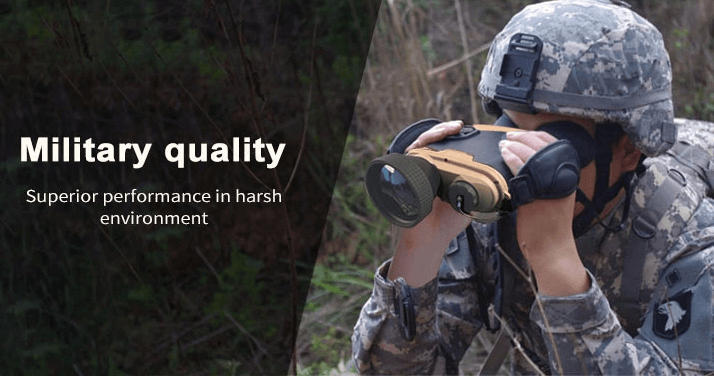There three types of thermal vision (night vision) that the military uses:
- Image Intensification – This works by magnifying the natural light available from moonlight, street lights, car headlights etc.
- Active illumination – This uses light that is not detectable by the human eye.
- Thermal Imaging – This method shows images based on the heat that is given off human body, for example. This might be the more familiar form of night vision to most individuals.
Most soldiers in the military are equipped with night vision googles. They look a bit like binoculars and use image intensification to scan the darkness for enemies. There is also a night vision device that more resembles a telescope. It can be mounted on a tank or weapon and also uses image intensification.
Night vision helps military personnel defend an area or scan for threats in the form of tanks or people who may wish to do them harm. Generally, when using these devices, things appear with a greenish tint because of the way the light reflects off of the landscape.
Thermal imaging is used by the military on a larger scale. Thermal imaging provides the ability to “see” people within a building, for example, and can also be used during daylight hours.
Thermal Binocular is rugged lightweight infrared binocular system that uses the latest in low-power, compact, uncooled thermal imaging technology. It used a at least 640×480 un-cooled thermal sensor with 50mm, 75mm or even 100mm lens for middle or long distance observation. The power save design should last battery operation time with fast startup and auto focus ability. Unlike image intensification night-vision devices that only magnify existing light, thermal imaging cuts through darkness, through smoke, dust and most fogs.
Thermal vision military binoculars can be used in widely applications:
- Operations.
- Border security.
- Commercial and perimeter security.
- Man-portable or multi function surveillance.

